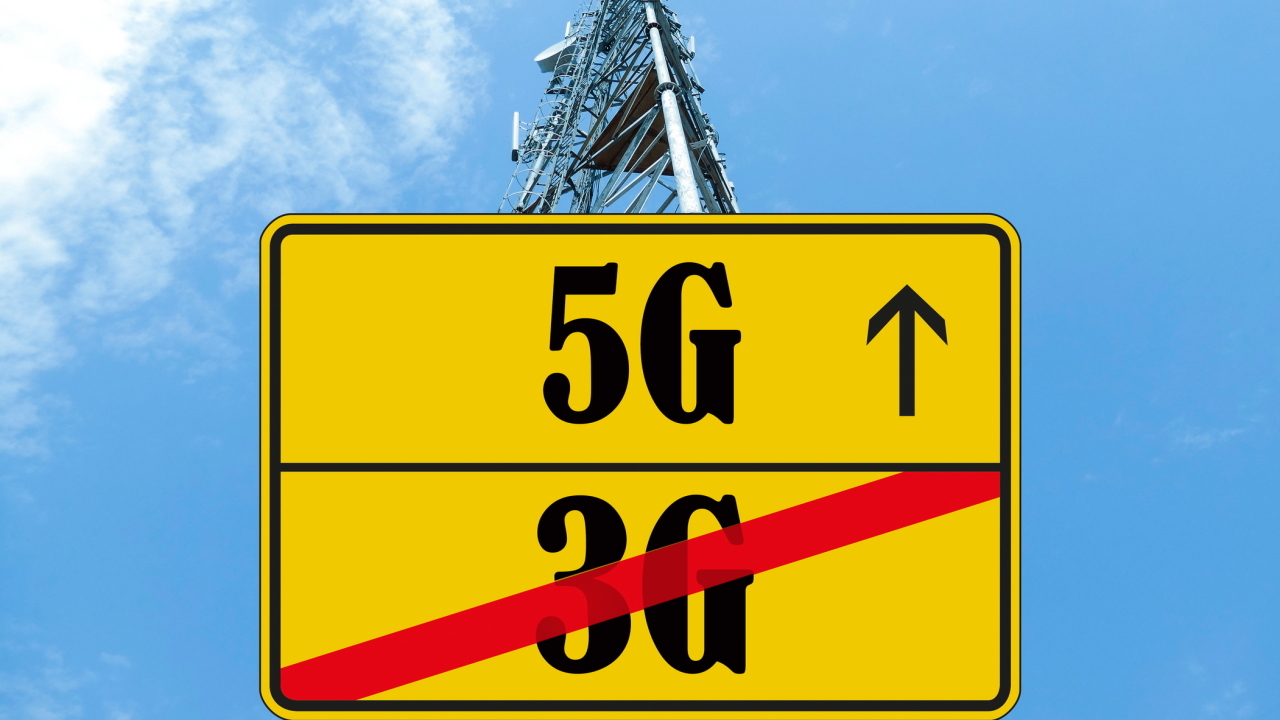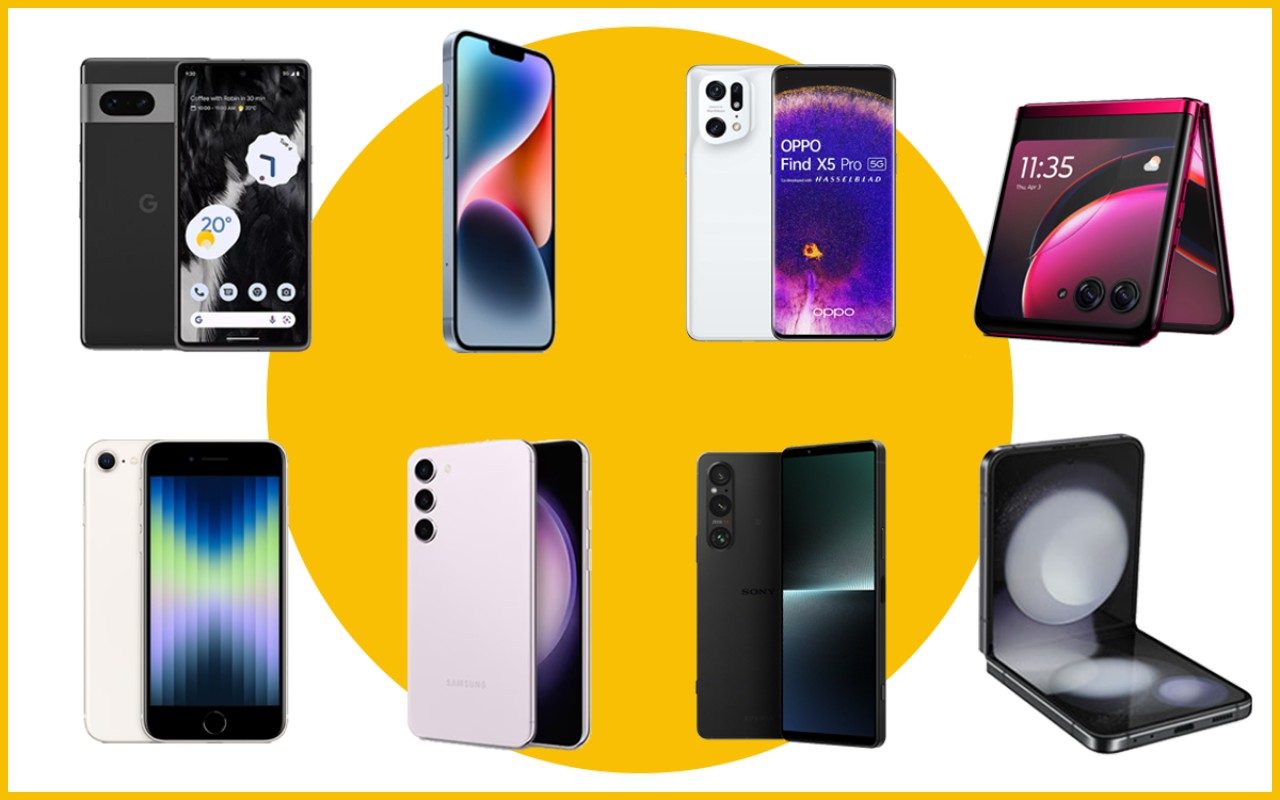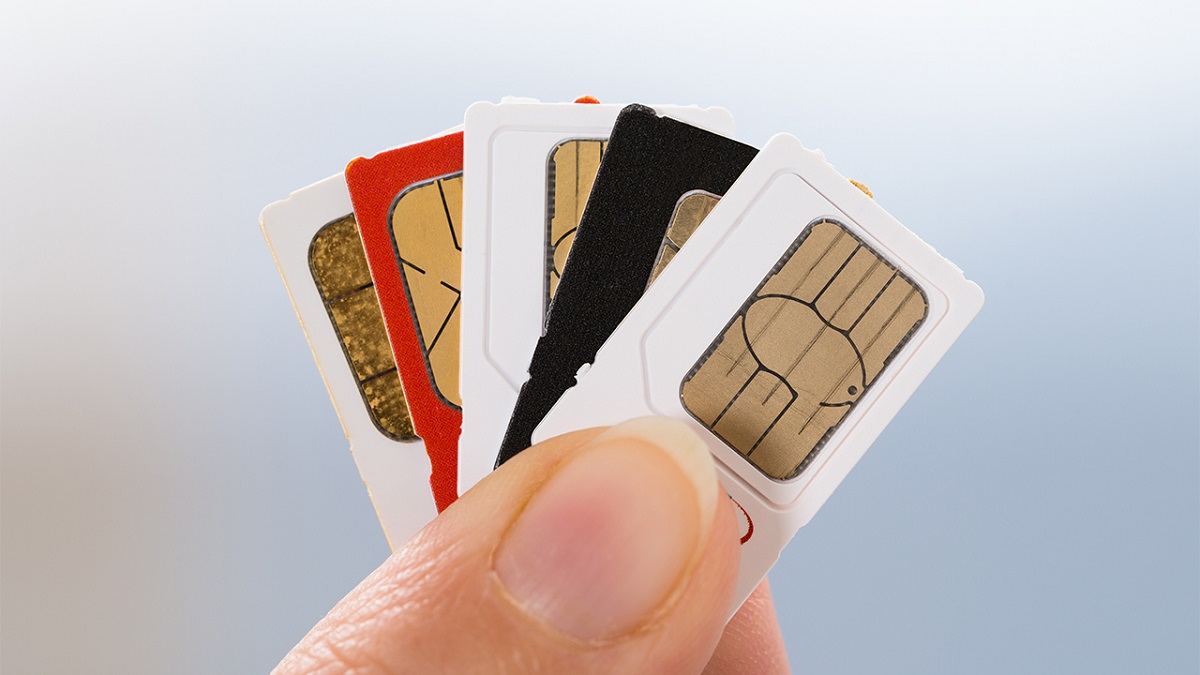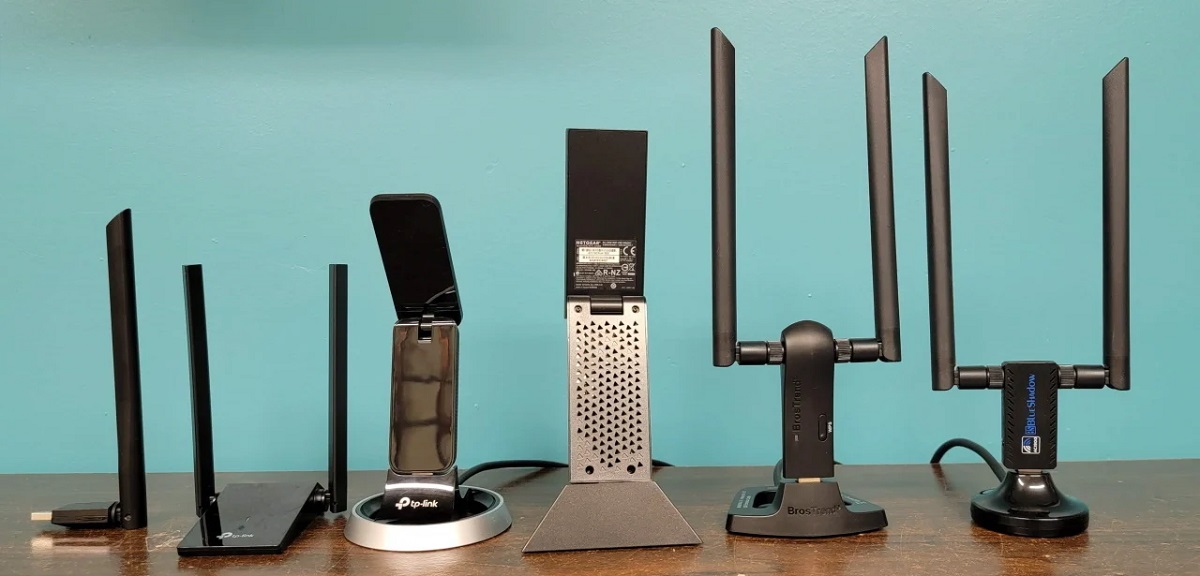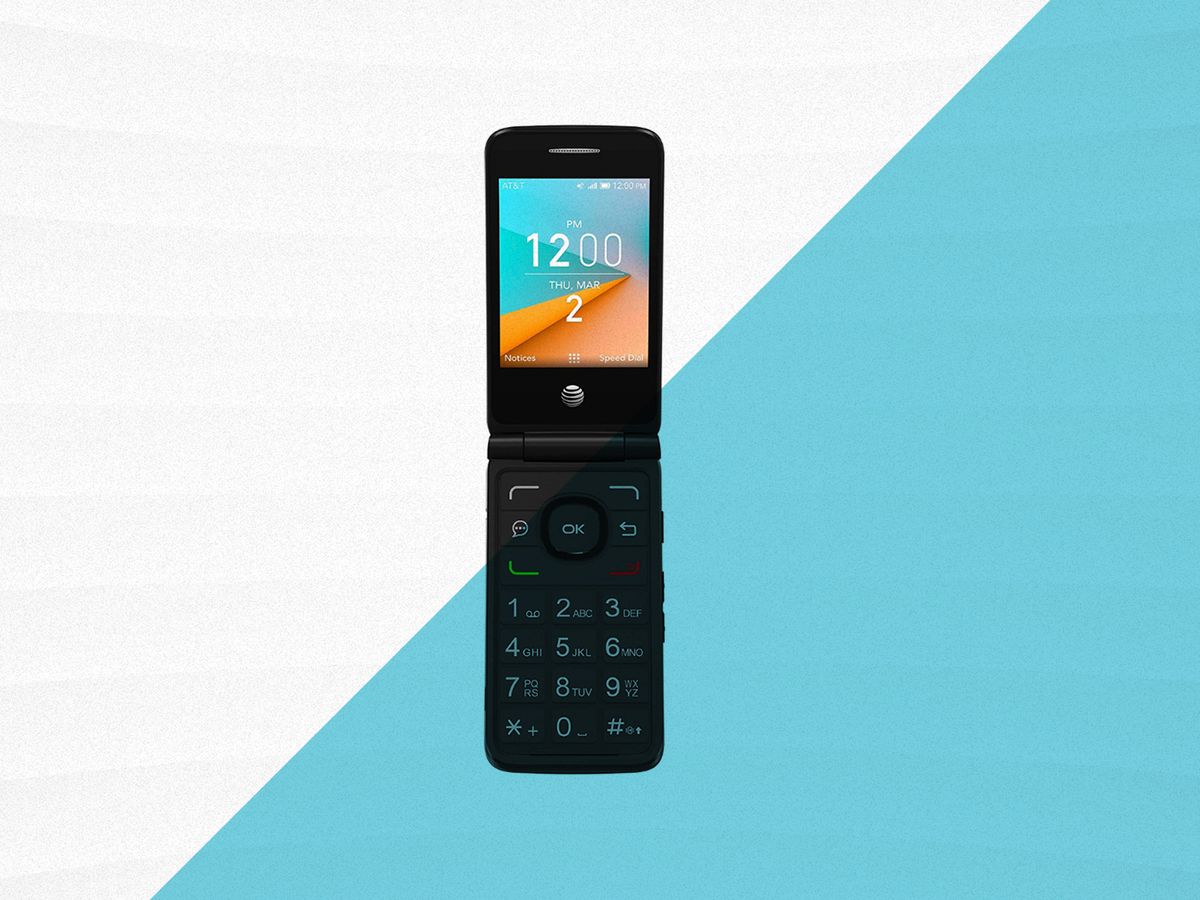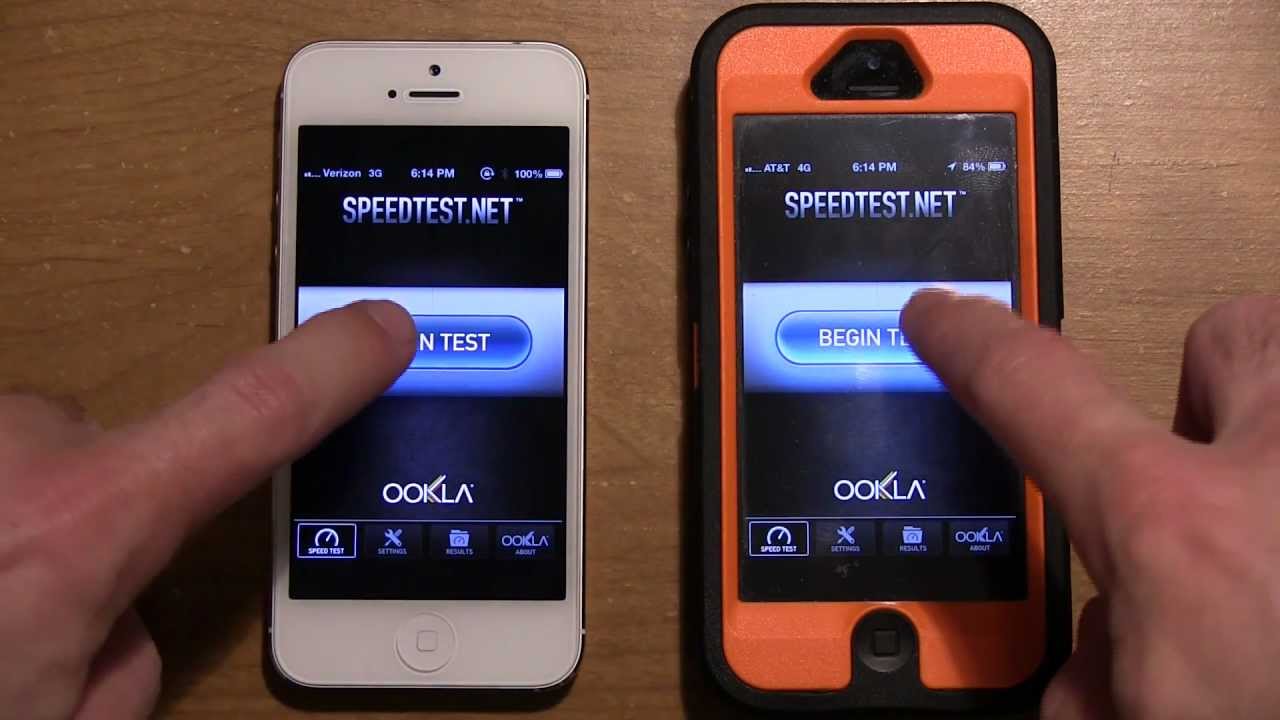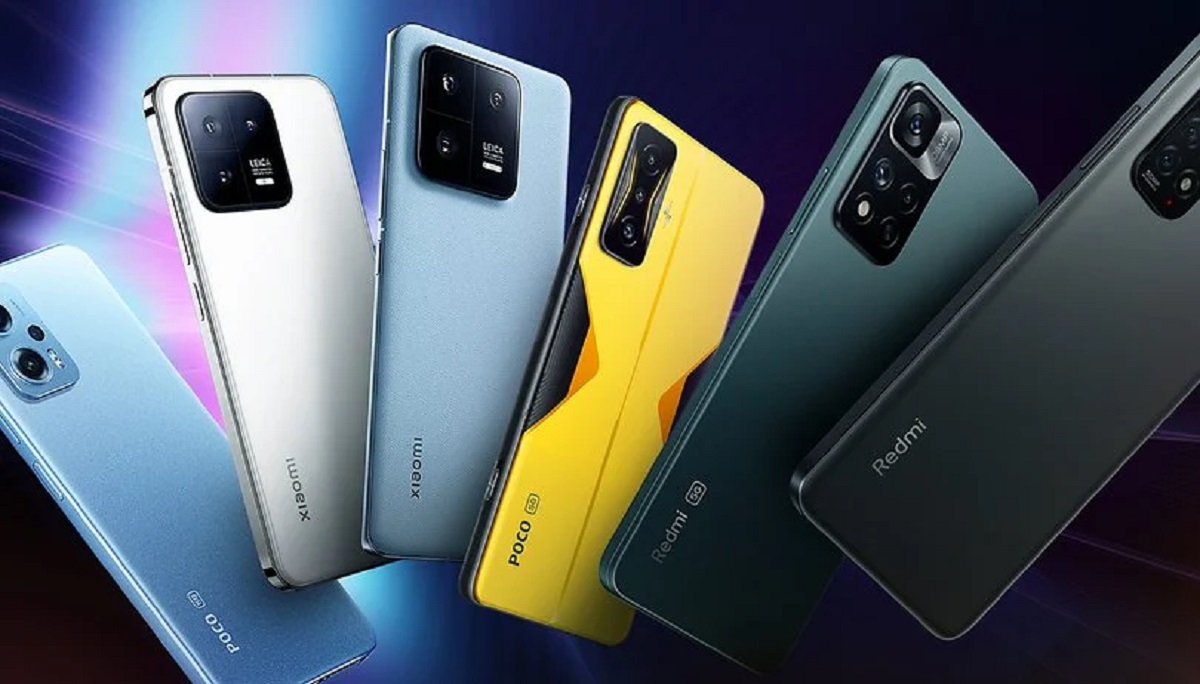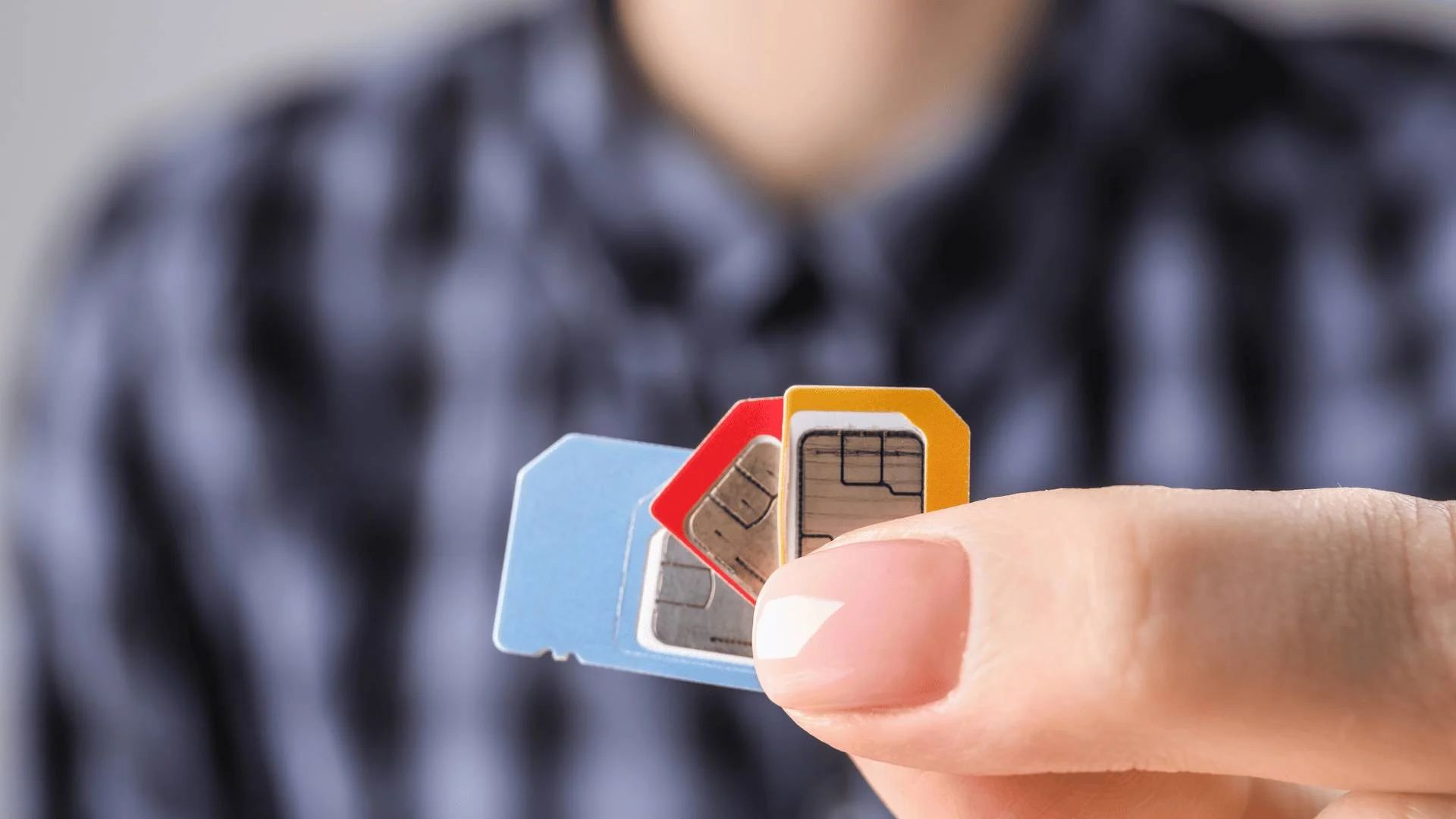Introduction
Welcome to the era of faster and more efficient wireless networks! Technology is constantly evolving, and to keep up with the demand for faster data speeds, telecom companies have been phasing out older generation networks in favor of more advanced technologies. One such network that is being phased out is 3G.
When you hear the term “3G,” you might think back to the early 2000s when it was considered a game-changer in mobile communications. It brought us the ability to browse the internet and connect with others through messaging and video calls on our handheld devices. However, with the advancement of technology, 3G has become outdated, unable to meet the growing demands of today’s data-hungry world.
For Verizon customers who still rely on 3G services, it’s important to be aware of the changes happening in the network landscape. This article will delve into the current state of Verizon’s 3G network, Verizon’s plans for retiring 3G, and the impact it will have on 3G customers. Additionally, we’ll explore the advantages of 4G LTE (Long-Term Evolution) over 3G and the steps you can take to smoothly transition from 3G to 4G LTE.
So, if you’re a Verizon customer or someone interested in the evolution of wireless networks, keep reading to find out when 3G ends for Verizon and what you need to know to stay connected.
What is 3G?
Before we delve into the specifics of Verizon’s 3G network and its eventual retirement, let’s take a moment to understand what 3G actually is. 3G, short for third-generation, is a mobile communication technology that was introduced in the late 1990s and early 2000s. It was a significant leap forward from its predecessor, 2G (second-generation), in terms of data transmission speeds and capabilities.
With 3G, users could access the internet on their mobile devices, send and receive multimedia messages (MMS), and make video calls. It brought about a revolution in mobile communications, making tasks like browsing the web, checking emails, and streaming media possible on the go.
Initially, 3G offered data speeds of up to 384 kilobits per second (kbps), which were considered very fast at the time. However, over the years, 3G networks underwent several upgrades, increasing the maximum data speeds available to users. In its later stages, 3G networks could offer download speeds up to 14 megabits per second (Mbps), significantly improving the user experience.
Despite its significant impact on mobile communications, 3G technology has started to show its limitations in recent years. The rapid growth in data usage, the rise of bandwidth-intensive applications, and the need for faster connectivity have made it less capable of meeting the demands of today’s mobile users.
As a result, telecommunications providers, including Verizon, have shifted their focus towards newer and faster technologies like 4G LTE and 5G. These technologies offer faster data speeds, lower latency, and greater capacity to handle the increasing data demands of modern users.
Now that we have a general understanding of 3G, let’s explore the current state of Verizon’s 3G network and its plans for phasing it out in the coming years.
The current state of Verizon’s 3G network
Verizon, one of the leading wireless carriers in the United States, has been at the forefront of technological advancements in the telecom industry. As of now, Verizon’s 3G network is still operational and provides coverage for its customers who have 3G-compatible devices. However, it is important to note that Verizon has announced plans to retire its 3G network in the near future.
The decision to retire 3G is mainly driven by the need to allocate resources for the deployment and expansion of newer and more advanced networks, such as 4G LTE and the upcoming 5G technology. These networks offer faster speeds, lower latency, and increased capacity, enabling customers to enjoy enhanced mobile experiences and access new services and applications.
While Verizon has not specified an exact date for the complete shutdown of its 3G network, it has mentioned that the process will be carried out in a phased manner. This means that different regions or areas may be impacted at different times. Verizon is committed to providing ample notice and support to its customers during this transition period.
If you are a Verizon customer who currently relies on 3G for your mobile services, you may be wondering how this retirement will affect you. The impact will vary depending on the type of services you use and the device you have.
Verizon has assured its customers that they will work closely with them to ensure a smooth transition to alternative networks. This may include encouraging customers to upgrade their devices to ones that support 4G LTE or 5G. Additionally, Verizon will provide information and guidance to help customers understand their options and make the necessary changes to continue enjoying uninterrupted mobile service.
In the next section, we will explore Verizon’s plans for retiring 3G and the steps you can take to transition from 3G to 4G LTE. So, if you are a Verizon customer still using 3G, stay tuned to find out more about the process and how it may impact you.
Verizon’s plans for retiring 3G
As technology continues to advance and customer demands evolve, Verizon has recognized the need to retire its 3G network and allocate resources towards more advanced and efficient technologies. While Verizon has not provided an exact date for the complete shutdown of its 3G network, the company has outlined its plans for the transition.
Verizon plans to gradually phase out its 3G network in a process that involves migrating customers to newer networks, such as 4G LTE and 5G. This phased approach ensures that customers have ample time to make the necessary changes and upgrade their devices to continue enjoying a reliable and high-speed network connection.
As part of the retirement plan, Verizon is committed to providing its customers with detailed information about the transition process. They will reach out to individual customers to notify them of the impending changes and offer guidance on their available options.
If you currently have a 3G device, Verizon will urge you to upgrade to a device that supports 4G LTE or 5G. By doing so, you can take advantage of faster data speeds, improved network stability, and a wider range of advanced features and services.
Verizon is also encouraging customers to take this opportunity to explore new plans and devices that cater to their individual needs. This may include considering data plans that offer larger data allowances, unlimited calling and texting, and other perks and benefits associated with the newer networks.
It’s important to note that while Verizon’s 3G network will be retired, the 4G LTE and 5G networks will provide backward compatibility. This means that customers with upgraded devices will still be able to connect to these networks and experience improved performance, even when using applications and services that were designed for 3G.
In the next section, we will explore the impact of Verizon’s 3G retirement on customers who are still using 3G devices and services. So, if you’re a Verizon customer relying on 3G, keep reading to find out what this transition means for you and how to best prepare for it.
Impact on Verizon 3G customers
The retirement of Verizon’s 3G network will have a significant impact on customers who are still using 3G devices and services. While the specific impact will vary depending on individual circumstances, here are some key points to consider:
1. Loss of Service: Once the 3G network is retired, customers with 3G-only devices will no longer be able to connect to the Verizon network. This means they will lose access to voice, text, and data services unless they upgrade to a device that supports 4G LTE or 5G.
2. Limited Coverage: As Verizon reallocates its resources towards newer technologies, the coverage for 3G may start to diminish. This could result in weaker signal strength and unreliable service in areas where 3G is still available. Upgrading to a newer device that supports 4G LTE or 5G will ensure access to a wider and more reliable network coverage.
3. Improved Performance: Transitioning from 3G to 4G LTE or 5G will bring noticeable improvements in terms of data speeds, network stability, and overall performance. Customers can expect faster browsing, smoother video streaming, and quicker downloads/uploads, enhancing their mobile experience.
4. Compatibility Issues: With the retirement of 3G, certain apps, services, and devices that rely solely on 3G may no longer work or experience limited functionality. This is because the newer networks have different capabilities, and some features designed for 3G may not be compatible. It’s essential to ensure that your apps and devices are compatible with 4G LTE or 5G before making the transition.
5. Upgrade Opportunities: Verizon’s retirement of 3G provides an opportunity for customers to upgrade their devices and explore new plans and features that were not available on 3G. By upgrading to a 4G LTE or 5G device, customers can take advantage of advanced features, larger data allowances, and benefits associated with the newer networks.
To minimize the impact of the transition, Verizon is committed to assisting its customers every step of the way. They will provide information and guidance on how to upgrade devices, choose suitable plans, and manage the transition smoothly.
In the next section, we’ll explore the advantages of 4G LTE over 3G. Understanding these benefits will help you see why upgrading to 4G LTE or 5G is a favorable option. So, stay tuned to learn more about the advantages of the newer networks.
Advantages of 4G LTE over 3G
As Verizon retires its 3G network, it brings forth the opportunity to upgrade to a faster and more efficient technology: 4G LTE (Long-Term Evolution). Here are some advantages of 4G LTE over its predecessor, 3G:
1. Faster Data Speeds: One of the most significant advantages of 4G LTE is faster data speeds. Compared to 3G, 4G LTE can offer download speeds that are up to ten times faster, enabling quicker access to web pages, faster file downloads, and seamless video streaming. This enhanced speed makes browsing and using data-intensive applications a much smoother experience.
2. Lower Latency: Latency refers to the time it takes for data to travel from the source to the destination. 4G LTE significantly reduces latency compared to 3G, resulting in more responsive, real-time connections. This is especially beneficial for applications that require quick response times, such as online gaming, video conferencing, and voice-over-IP (VoIP) services.
3. Increased Capacity and Bandwidth: 4G LTE networks have a higher capacity to handle more simultaneous connections and higher data volumes. This means that even in areas with high network traffic, users can still experience reliable and uninterrupted connectivity. The increased bandwidth allows for smoother user experiences, even when accessing bandwidth-demanding applications or multimedia content.
4. Enhanced Voice Quality: 4G LTE supports high-definition voice calls, providing clearer and more natural-sounding conversations. This improvement in voice quality is a result of the wider frequency range offered by LTE networks. Users can enjoy better call clarity, reduced background noise, and improved overall call quality.
5. Advanced Features and Services: 4G LTE opens up possibilities for innovative features and services that were not available on 3G networks. It enables high-quality video calling, seamless multi-player gaming experiences, and the ability to connect multiple devices through personal hotspots. With 4G LTE, users can also take advantage of augmented reality (AR) applications, IoT (Internet of Things) devices, and other emerging technologies.
By transitioning from 3G to 4G LTE, Verizon customers will experience firsthand the transformative benefits of this advanced network technology. 4G LTE offers a more robust and future-ready mobile experience, enabling users to unlock the full potential of their devices and enjoy faster, more reliable, and feature-rich wireless connectivity.
In the next section, we will discuss the steps you can take to transition from 3G to 4G LTE seamlessly. So, if you’re ready to embrace the advantages of 4G LTE, keep reading to learn how to make a smooth transition.
Transitioning from 3G to 4G LTE
Transitioning from 3G to 4G LTE is an important step to ensure that you can continue to enjoy reliable and high-speed mobile connectivity. Here are the steps you can take to make a seamless transition:
1. Check Device Compatibility: The first step is to check if your current device is 4G LTE compatible. Most newer smartphones and tablets are likely to support 4G LTE, but older devices may not. You can check the device specifications or contact Verizon customer support for assistance. If your device doesn’t support 4G LTE, upgrading to a compatible device is necessary.
2. Upgrade your Device: If your current device is not 4G LTE compatible, it’s essential to consider upgrading to a newer device that supports the technology. Verizon offers a wide selection of 4G LTE-capable devices to choose from, including smartphones, tablets, and mobile hotspots. Upgrading your device will ensure that you can fully benefit from the speed and functionality of 4G LTE.
3. Choose a Suitable Plan: Once your device is 4G LTE ready, it’s important to review your current plan and consider whether it aligns with your usage and requirements. Verizon offers various plans specifically designed for 4G LTE, which often include larger data allowances, unlimited calling and texting, and additional benefits. Take the time to explore the available options and select a plan that best suits your needs.
4. Back up your Data: Before making any changes or upgrading your device, it’s always good practice to back up your data. This ensures that all your important files, contacts, and apps are safely stored and can be easily transferred to your new device. You can utilize cloud storage services or connect your device to a computer to create a backup.
5. Transfer Contacts and Apps: Once you have your new 4G LTE device, you can transfer your contacts and apps from your old device. Most smartphones provide built-in tools or apps that allow for easy transfer of contacts, photos, and other data. Additionally, you can download your previously used apps from the app store onto your new device.
6. Set up and Activate: Follow the device’s setup instructions to activate your new 4G LTE device. This typically involves inserting a SIM card, connecting to a Wi-Fi network, and entering your account information and settings. Verizon provides step-by-step guides to help you through the activation process.
By following these steps, you can smoothly transition from 3G to 4G LTE and take full advantage of the faster data speeds, improved network reliability, and advanced features that 4G LTE offers.
In the next section, we’ll discuss how to check if your device is 3G-compatible and provide additional tips for a smoother transition to 4G LTE. So, keep reading to ensure a seamless upgrade to the newer network.
How to check if your device is 3G-compatible
If you’re uncertain whether your current device is 3G-compatible or not, there are a few simple steps you can take to check:
1. Check the Device Specifications: One of the easiest ways to determine if your device supports 3G is to check the device specifications. You can usually find this information in the user manual or on the manufacturer’s website. Look for details about the supported network technologies, such as 3G or HSPA (High-Speed Packet Access).
2. Contact your Service Provider: If you’re unsure about your device’s compatibility, contacting your service provider, in this case, Verizon, is a reliable option. Reach out to their customer support team and provide them with your device’s make and model. They will be able to confirm whether your device is 3G-compatible or not.
3. Network Indicator: On many devices, you can also check the network indicator on the status bar. If you see 3G, H+, or HSPA, it is an indication that your device is capable of connecting to a 3G network. However, please note that this may vary depending on the device and the network settings.
4. Online Phone Compatibility Tools: Another useful resource is online phone compatibility tools provided by Verizon. These tools allow you to enter your device’s make and model to check its compatibility with Verizon’s networks. Simply access the Verizon Wireless website and look for the phone compatibility section to find the necessary tool.
Remember that even if your device is compatible with 3G, Verizon plans to retire its 3G network in the near future. To ensure uninterrupted service and access to faster data speeds, it is recommended to upgrade to a device that supports 4G LTE or 5G.
In the next section, we will provide additional tips for a smoother transition from 3G to 4G LTE. These tips will help you make the most out of your upgraded device and ensure a hassle-free experience on the newer network. So, continue reading for valuable insights and recommendations.
Upgrading your device for the 4G LTE network
To fully embrace the benefits of Verizon’s 4G LTE network, upgrading your device is essential. Here are the steps to upgrade your device for the 4G LTE network:
1. Evaluate your Device: Take a look at your current device and determine if it supports 4G LTE. Check the specifications, user manual, or contact Verizon customer support for confirmation. If your device is not 4G LTE compatible, upgrading to a newer device is necessary for optimal performance.
2. Research and Compare: Explore the wide range of 4G LTE-compatible devices available. Consider factors such as device features, specifications, pricing, and customer reviews to find a device that suits your needs and budget. Verizon offers a variety of smartphones, tablets, and other mobile devices that support 4G LTE.
3. Upgrade Options: Verizon provides several options to upgrade your device. You can purchase a new device outright, enroll in a device payment plan, or take advantage of promotional offers and trade-in programs to lower the cost of the new device. Understand the terms and conditions associated with each option to make an informed decision.
4. Transfer Data: Before upgrading your device, ensure that your important data is backed up. You can use various methods to transfer your data, such as using cloud storage services, connecting your device to a computer to create a backup, or using specialized transfer apps or tools provided by the device manufacturer.
5. Set up the New Device: Once you have your new 4G LTE device, follow the manufacturer’s instructions to set it up. This typically involves inserting the SIM card, connecting to a Wi-Fi network, and completing the initial setup process. You may need to sign in to your Verizon account and verify your device with the carrier.
6. Activate the New Device: After setting up your new device, contact Verizon or follow the activation instructions provided with the device to activate it on the 4G LTE network. Activation typically involves verifying your account information and syncing your device with your Verizon account. Verizon’s customer support can guide you through the activation process if needed.
By upgrading to a device that supports 4G LTE, you will experience faster data speeds, improved reliability, and access to advanced features and services. Ensure that you understand the terms and conditions of any upgrade options and take advantage of resources provided by Verizon to make the upgrade process as seamless as possible.
In the next section, we will provide additional tips to ensure a smoother transition to 4G LTE. These tips will help you navigate the upgrade process and make the most out of your new device and network. So, continue reading to gather valuable insights and recommendations.
Additional tips for a smoother transition to 4G LTE
Transitioning from 3G to 4G LTE can be a smooth and seamless process with the right approach. Here are some additional tips to ensure a smoother transition:
1. Check Network Coverage: Before upgrading to 4G LTE, make sure to check the network coverage in your area. Verizon’s 4G LTE network covers a vast majority of the United States, but it’s always advisable to verify the coverage specific to your location. This ensures that you can fully enjoy the benefits of 4G LTE in your area.
2. Explore New Features and Services: With 4G LTE, you have access to a wide range of new features and services. Take the time to explore and familiarize yourself with the capabilities of your new device. Experiment with video calling, multi-player gaming, and other advanced applications that were not available on 3G networks. Discover how 4G LTE can enhance your mobile experience.
3. Optimize Network Settings: For optimal performance on the 4G LTE network, ensure that your device’s network settings are properly configured. Enable Voice over LTE (VoLTE) to make HD voice calls, and enable LTE data to take advantage of faster data speeds. Adjust other settings, such as data roaming and network selection, to suit your preferences and requirements.
4. Utilize Wi-Fi when Available: While 4G LTE offers fast data speeds, it’s always beneficial to connect to Wi-Fi networks whenever possible. This not only helps conserve your cellular data but also provides even faster speeds in areas with Wi-Fi coverage. Take advantage of Wi-Fi connections at home, work, or public places to optimize your mobile experience.
5. Keep an Eye on Data Usage: With the faster speeds offered by 4G LTE, it’s easy to consume more data. Monitor your data usage regularly to avoid exceeding your plan’s allowance or incurring additional charges. You can use the data usage tracking feature on your device or the Verizon mobile app to stay informed about your data usage.
6. Take Advantage of Verizon Resources: Verizon provides various resources to assist customers during the transition to 4G LTE. Take advantage of their customer support, online forums, tutorials, and FAQs to address any questions or concerns you may have. Their knowledgeable support staff can help with activation, troubleshooting, and other aspects of the upgrade process.
By following these additional tips, you can make the transition to 4G LTE a smooth and enjoyable experience. Embrace the advanced features, faster speeds, and increased capabilities offered by 4G LTE, and fully explore what the new network has to offer.
In the next section, we will conclude the article by summarizing the key points discussed and emphasizing the importance of staying informed about network transitions and technology advancements. So, keep reading for the final thoughts on the topic.
Conclusion
The retirement of Verizon’s 3G network marks a significant shift in the wireless landscape. As technology continues to advance, 4G LTE and 5G are becoming the new standards, offering faster data speeds, lower latency, and advanced features. Upgrading from 3G to 4G LTE ensures that you can continue to enjoy reliable and high-speed mobile connectivity.
In this article, we explored the current state of Verizon’s 3G network and their plans to retire it. We discussed the impact on Verizon’s 3G customers and the advantages of upgrading to 4G LTE. We also provided steps to transition from 3G to 4G LTE, including checking device compatibility, upgrading devices, and selecting suitable data plans.
Additionally, we offered tips for a smoother transition, such as checking network coverage, exploring new features, optimizing network settings, utilizing Wi-Fi, monitoring data usage, and leveraging Verizon’s resources. These tips aim to help you make the most out of your upgrade and ensure a seamless transition to the 4G LTE network.
As technology continues to evolve, it’s important to stay informed about network transitions and technology advancements. Keeping up with the latest developments will allow you to make well-informed decisions regarding your mobile connectivity and ensure that you’re maximizing the potential of your devices.
So, whether you’re a Verizon customer or simply interested in the evolution of wireless networks, stay informed, embrace the benefits of 4G LTE, and enjoy the fast and reliable connectivity it offers. Upgrade your devices, explore new features, and continue to adapt to the ever-changing world of mobile technology.







